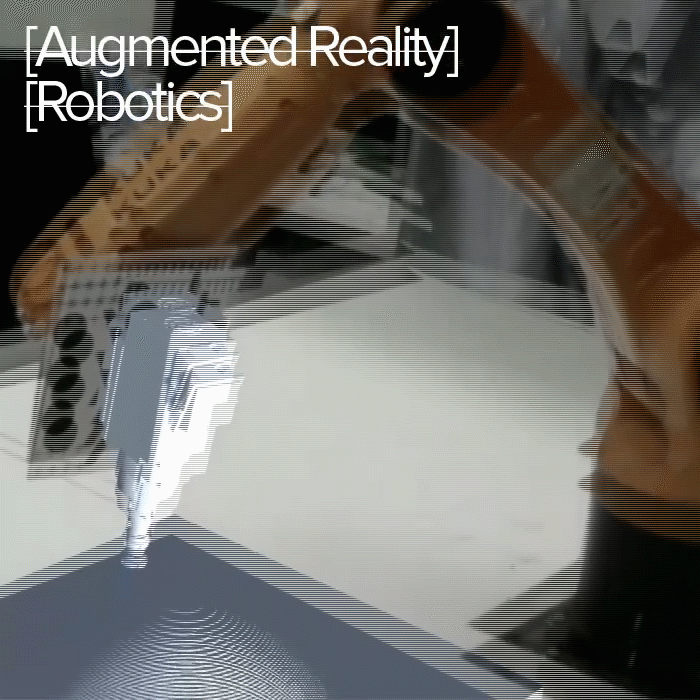





























By Dymon Beckham | Third-year UG Studio EP.
Cultural Garden
Third-year UG Studio | Fall 2019
From [the Studio Syllabus]:
Situated in Kent, Ohio, not far from the CAED building, STAR-ed Solids studio employs the established idea of “Objects in a Sack” [i] to revisit the part-to-part and the part-to-whole relationships through formal and organizational negotiations. Using site, massing, and interiority as objectified intellectual vehicles, the studio investigates the object-hood/object-ness of the space, and users’ experience in multiple scales.
STAR-ed Solids studio will be heavily focused on digital fabrication and model making as means of experimental and iterative design. Throughout the semester, students will design a cultural indoor/outdoor garden with a focus on interiority, exteriority, and possible interstitial spaces.
Located in Kent and across from the CAED, the site of the project sits on the edge of the Haymaker Parkway and South Willow Street. Using the studies from the first project/object, students develop a completed cultural garden project. The architecture not only meets all the qualities of the first STAR-ed object—through the connection of inside/outside, “loose-fits” and compositional strategies but also curates a spatial “experience” through its interiors and atmosphere and their connection to the landscape.
The studio continually goes back and forth between digital and physical design environments using prototyping and testing. In this project, students precisely study both the site development at a finer scale, and the development of interiors through the notion of objects inside objects.
Parallel to massing/interior studies, students will also work on the ground condition as a low-relief object in response to object/ground relationship as well as “ground-object” itself and site-city relationship. Object/ground relationship study will focus on how the “building” interacts with the ground. The ground-object/site interaction studies how the form of the ground—as a low-relief object, in response to the needs of the site and, most importantly, accessibility and view.
TEXTURE as an Architectural Element
Looking at the potential of customized penalizations, the studio uses texture as a way to study openings, structure, penalization and material transition, material transition, inside-outside transition, and object/ground relationship.
Using culture as a visual/aesthetical source, STAR-ed Solids Studio examines the potential of the texturing as a way to project another layer of characteristics to the Stared Object.
Student: Matthew Miller

![Star[ed] Solids001](https://static.wixstatic.com/media/7ea1bd_f0c7e6b742974f7fb4007e4b9fcf4e07~mv2.jpg/v1/fill/w_250,h_188,al_c,q_90,enc_auto/7ea1bd_f0c7e6b742974f7fb4007e4b9fcf4e07~mv2.jpg) | ![Star[ed] Solids002](https://static.wixstatic.com/media/7ea1bd_253b0e18b94a408eb10a058088aa06be~mv2.jpg/v1/fill/w_250,h_188,al_c,q_90,enc_auto/7ea1bd_253b0e18b94a408eb10a058088aa06be~mv2.jpg) |
|---|---|
![Star[ed] Solids003](https://static.wixstatic.com/media/7ea1bd_3550904bc3de4d7296e53edb8a318019~mv2.jpg/v1/fill/w_250,h_188,al_c,q_90,enc_auto/7ea1bd_3550904bc3de4d7296e53edb8a318019~mv2.jpg) | ![Star[ed] Solids004](https://static.wixstatic.com/media/7ea1bd_58d45e2c7072428995983c377c6e81f7~mv2.jpg/v1/fill/w_250,h_188,al_c,q_90,enc_auto/7ea1bd_58d45e2c7072428995983c377c6e81f7~mv2.jpg) |
![Star[ed] Solids005](https://static.wixstatic.com/media/7ea1bd_a7083b818ee24098af407e83063b7f2d~mv2.jpg/v1/fill/w_250,h_188,al_c,q_90,enc_auto/7ea1bd_a7083b818ee24098af407e83063b7f2d~mv2.jpg) | ![Star[ed] Solids006](https://static.wixstatic.com/media/7ea1bd_b7c93d8a3fdc465f8dbe8c92337e868c~mv2.jpg/v1/fill/w_250,h_188,al_c,q_90,enc_auto/7ea1bd_b7c93d8a3fdc465f8dbe8c92337e868c~mv2.jpg) |
![Star[ed] Solids007](https://static.wixstatic.com/media/7ea1bd_e6763383dfa94b1187f75ff6e2bdb288~mv2.jpg/v1/fill/w_250,h_188,al_c,q_90,enc_auto/7ea1bd_e6763383dfa94b1187f75ff6e2bdb288~mv2.jpg) | ![Star[ed] Solids008](https://static.wixstatic.com/media/7ea1bd_b94381cb1e8a48d186a6f1e38f26c33d~mv2.jpg/v1/fill/w_250,h_188,al_c,q_90,enc_auto/7ea1bd_b94381cb1e8a48d186a6f1e38f26c33d~mv2.jpg) |
![Star[ed] Solids009](https://static.wixstatic.com/media/7ea1bd_bfa75a1de87c468295f15f5b894a959a~mv2.jpg/v1/fill/w_250,h_188,al_c,q_90,enc_auto/7ea1bd_bfa75a1de87c468295f15f5b894a959a~mv2.jpg) | ![Star[ed] Solids010](https://static.wixstatic.com/media/7ea1bd_4b8f36ddb7ac4bffae5e5b790650fa74~mv2.jpg/v1/fill/w_250,h_188,al_c,q_90,enc_auto/7ea1bd_4b8f36ddb7ac4bffae5e5b790650fa74~mv2.jpg) |
![Star[ed] Solids011](https://static.wixstatic.com/media/7ea1bd_0ffeb9794bfd474eaf825245c0afe6c2~mv2.jpg/v1/fill/w_250,h_188,al_c,q_90,enc_auto/7ea1bd_0ffeb9794bfd474eaf825245c0afe6c2~mv2.jpg) | ![Star[ed] Solids012](https://static.wixstatic.com/media/7ea1bd_15df8821ef5a43b2a0f64beb8782aa41~mv2.jpg/v1/fill/w_250,h_188,al_c,q_90,enc_auto/7ea1bd_15df8821ef5a43b2a0f64beb8782aa41~mv2.jpg) |
Student: Nicholas Patrick

![Star[ed] Solids013](https://static.wixstatic.com/media/7ea1bd_ee9bce7e3b414693b0c4dab45d8e8c6b~mv2.jpg/v1/fill/w_250,h_161,al_c,q_90,enc_auto/7ea1bd_ee9bce7e3b414693b0c4dab45d8e8c6b~mv2.jpg) | ![Star[ed] Solids014](https://static.wixstatic.com/media/7ea1bd_84c7107f05fa45468bb1882373a2ed8a~mv2.jpg/v1/fill/w_250,h_161,al_c,q_90,enc_auto/7ea1bd_84c7107f05fa45468bb1882373a2ed8a~mv2.jpg) |
|---|---|
![Star[ed] Solids015](https://static.wixstatic.com/media/7ea1bd_37fbb1325875492ab646de8fd80024d7~mv2.jpg/v1/fill/w_250,h_161,al_c,q_90,enc_auto/7ea1bd_37fbb1325875492ab646de8fd80024d7~mv2.jpg) | ![Star[ed] Solids016](https://static.wixstatic.com/media/7ea1bd_3f5cfeb63db2400396fc2213c4ad1fd6~mv2.jpg/v1/fill/w_250,h_161,al_c,q_90,enc_auto/7ea1bd_3f5cfeb63db2400396fc2213c4ad1fd6~mv2.jpg) |
![Star[ed] Solids017](https://static.wixstatic.com/media/7ea1bd_91640735095b4423b59ced0fa20a9302~mv2.jpg/v1/fill/w_250,h_161,al_c,q_90,enc_auto/7ea1bd_91640735095b4423b59ced0fa20a9302~mv2.jpg) | ![Star[ed] Solids018](https://static.wixstatic.com/media/7ea1bd_62a509d70a8245daa1a9dafd27317c8c~mv2.jpg/v1/fill/w_250,h_161,al_c,q_90,enc_auto/7ea1bd_62a509d70a8245daa1a9dafd27317c8c~mv2.jpg) |
![Star[ed] Solids019](https://static.wixstatic.com/media/7ea1bd_ced3ad8495ab422cbe43e03d612e5738~mv2.jpg/v1/fill/w_250,h_161,al_c,q_90,enc_auto/7ea1bd_ced3ad8495ab422cbe43e03d612e5738~mv2.jpg) | ![Star[ed] Solids020](https://static.wixstatic.com/media/7ea1bd_33064e269f6a40f5b8f5abfa551f0a7b~mv2.jpg/v1/fill/w_250,h_161,al_c,q_90,enc_auto/7ea1bd_33064e269f6a40f5b8f5abfa551f0a7b~mv2.jpg) |
![Star[ed] Solids021](https://static.wixstatic.com/media/7ea1bd_0df4caf1db004a6991782815f06500af~mv2.jpg/v1/fill/w_250,h_161,al_c,q_90,enc_auto/7ea1bd_0df4caf1db004a6991782815f06500af~mv2.jpg) | ![Star[ed] Solids022](https://static.wixstatic.com/media/7ea1bd_8486efa6437440f5b23a26900725e6b9~mv2.jpg/v1/fill/w_250,h_161,al_c,q_90,enc_auto/7ea1bd_8486efa6437440f5b23a26900725e6b9~mv2.jpg) |
![Star[ed] Solids023](https://static.wixstatic.com/media/7ea1bd_f46e86e08a0148bc89a8ff2d5c100cad~mv2.jpg/v1/fill/w_250,h_161,al_c,q_90,enc_auto/7ea1bd_f46e86e08a0148bc89a8ff2d5c100cad~mv2.jpg) | ![Star[ed] Solids024](https://static.wixstatic.com/media/7ea1bd_344213d296b54f9c9e22f47e465a7020~mv2.jpg/v1/fill/w_250,h_161,al_c,q_90,enc_auto/7ea1bd_344213d296b54f9c9e22f47e465a7020~mv2.jpg) |
Student: Dymon Beckham



![Star[ed] Solids025](https://static.wixstatic.com/media/7ea1bd_1ccedadaca4e4953b21dc443399885d0~mv2.jpg/v1/fill/w_250,h_138,al_c,q_90,enc_auto/7ea1bd_1ccedadaca4e4953b21dc443399885d0~mv2.jpg) | ![Star[ed] Solids026](https://static.wixstatic.com/media/7ea1bd_f60ab38f4c4e4ef08bb458044cc40961~mv2.jpg/v1/fill/w_250,h_153,al_c,q_90,enc_auto/7ea1bd_f60ab38f4c4e4ef08bb458044cc40961~mv2.jpg) |
|---|---|
![Star[ed] Solids027](https://static.wixstatic.com/media/7ea1bd_0507883a05dc43bcae28049dcb34e5a6~mv2.jpg/v1/fill/w_250,h_153,al_c,q_90,enc_auto/7ea1bd_0507883a05dc43bcae28049dcb34e5a6~mv2.jpg) | ![Star[ed] Solids028](https://static.wixstatic.com/media/7ea1bd_e88c97f154144e35b48aace94039e444~mv2.jpg/v1/fill/w_250,h_153,al_c,q_90,enc_auto/7ea1bd_e88c97f154144e35b48aace94039e444~mv2.jpg) |
![Star[ed] Solids029](https://static.wixstatic.com/media/7ea1bd_b8b6aab021a3411e88c99c4b7f0143dd~mv2.jpg/v1/fill/w_250,h_153,al_c,q_90,enc_auto/7ea1bd_b8b6aab021a3411e88c99c4b7f0143dd~mv2.jpg) | ![Star[ed] Solids030](https://static.wixstatic.com/media/7ea1bd_01a14aa96321489eb801fc8621d3bc8c~mv2.jpg/v1/fill/w_250,h_153,al_c,q_90,enc_auto/7ea1bd_01a14aa96321489eb801fc8621d3bc8c~mv2.jpg) |
![Star[ed] Solids031](https://static.wixstatic.com/media/7ea1bd_1d28a240ccbc4fe4bb32ea33035f13f5~mv2.jpg/v1/fill/w_250,h_153,al_c,q_90,enc_auto/7ea1bd_1d28a240ccbc4fe4bb32ea33035f13f5~mv2.jpg) | ![Star[ed] Solids032](https://static.wixstatic.com/media/7ea1bd_f20e492d189d40a1af698551fe23c54b~mv2.jpg/v1/fill/w_250,h_140,al_c,q_90,enc_auto/7ea1bd_f20e492d189d40a1af698551fe23c54b~mv2.jpg) |
![Star[ed] Solids033](https://static.wixstatic.com/media/7ea1bd_f0a7003d55e04ed39011f7cb31902814~mv2.jpg/v1/fill/w_250,h_140,al_c,q_90,enc_auto/7ea1bd_f0a7003d55e04ed39011f7cb31902814~mv2.jpg) | ![Star[ed] Solids034](https://static.wixstatic.com/media/7ea1bd_fe697e6c51e44e1182faf39ed09542b4~mv2.jpg/v1/fill/w_250,h_135,al_c,q_90,enc_auto/7ea1bd_fe697e6c51e44e1182faf39ed09542b4~mv2.jpg) |
Student: Foster Rak
![Star[ed] Solids035](https://static.wixstatic.com/media/7ea1bd_bd6794a605ff427daac23e526faf199b~mv2.jpg/v1/fill/w_250,h_161,al_c,q_90,enc_auto/7ea1bd_bd6794a605ff427daac23e526faf199b~mv2.jpg) | ![Star[ed] Solids036](https://static.wixstatic.com/media/7ea1bd_7210d613c5f349f99a88be993b95e8c8~mv2.jpg/v1/fill/w_250,h_161,al_c,q_90,enc_auto/7ea1bd_7210d613c5f349f99a88be993b95e8c8~mv2.jpg) |
|---|---|
![Star[ed] Solids037](https://static.wixstatic.com/media/7ea1bd_672b1bad218142dabf0e23e9c1688fa2~mv2.jpg/v1/fill/w_250,h_161,al_c,q_90,enc_auto/7ea1bd_672b1bad218142dabf0e23e9c1688fa2~mv2.jpg) | ![Star[ed] Solids038](https://static.wixstatic.com/media/7ea1bd_7c85a0b7a76b474eab5c175308ac7e95~mv2.jpg/v1/fill/w_250,h_161,al_c,q_90,enc_auto/7ea1bd_7c85a0b7a76b474eab5c175308ac7e95~mv2.jpg) |
![Star[ed] Solids039](https://static.wixstatic.com/media/7ea1bd_db6e547b8ddb47478aa16eda22c0e6b3~mv2.jpg/v1/fill/w_250,h_180,al_c,q_90,enc_auto/7ea1bd_db6e547b8ddb47478aa16eda22c0e6b3~mv2.jpg) | ![Star[ed] Solids040](https://static.wixstatic.com/media/7ea1bd_8917f1c41e1c43868066d22df8792c9e~mv2.jpg/v1/fill/w_250,h_161,al_c,q_90,enc_auto/7ea1bd_8917f1c41e1c43868066d22df8792c9e~mv2.jpg) |
![Star[ed] Solids041](https://static.wixstatic.com/media/7ea1bd_8216cf904c134f0babfcd8abef499005~mv2.jpg/v1/fill/w_250,h_161,al_c,q_90,enc_auto/7ea1bd_8216cf904c134f0babfcd8abef499005~mv2.jpg) | ![Star[ed] Solids042](https://static.wixstatic.com/media/7ea1bd_63c54ddf3cfb4e57847c93c8f730f221~mv2.jpg/v1/fill/w_250,h_161,al_c,q_90,enc_auto/7ea1bd_63c54ddf3cfb4e57847c93c8f730f221~mv2.jpg) |
Student: Abdur Rahman Pahlwan

![Star[ed] Solids043](https://static.wixstatic.com/media/7ea1bd_1264ca4922094245bb3cdd22594c46ed~mv2.jpg/v1/fill/w_250,h_161,al_c,q_90,enc_auto/7ea1bd_1264ca4922094245bb3cdd22594c46ed~mv2.jpg) | ![Star[ed] Solids044](https://static.wixstatic.com/media/7ea1bd_82a1da36871942f2b37bfbb1902cca91~mv2.jpg/v1/fill/w_250,h_161,al_c,q_90,enc_auto/7ea1bd_82a1da36871942f2b37bfbb1902cca91~mv2.jpg) |
|---|---|
![Star[ed] Solids045](https://static.wixstatic.com/media/7ea1bd_9560fbd1e564460abdb52c43cc5dab21~mv2.jpg/v1/fill/w_250,h_161,al_c,q_90,enc_auto/7ea1bd_9560fbd1e564460abdb52c43cc5dab21~mv2.jpg) | ![Star[ed] Solids046](https://static.wixstatic.com/media/7ea1bd_749e2d56fb5a4f7ab7e2a9f1ad1acffe~mv2.jpg/v1/fill/w_250,h_161,al_c,q_90,enc_auto/7ea1bd_749e2d56fb5a4f7ab7e2a9f1ad1acffe~mv2.jpg) |
![Star[ed] Solids047](https://static.wixstatic.com/media/7ea1bd_64ac81845ab24872bc8791458b6f5d32~mv2.jpg/v1/fill/w_250,h_161,al_c,q_90,enc_auto/7ea1bd_64ac81845ab24872bc8791458b6f5d32~mv2.jpg) | ![Star[ed] Solids048](https://static.wixstatic.com/media/7ea1bd_a927aec114e345fabbbe4eb041a95a93~mv2.jpg/v1/fill/w_250,h_140,al_c,q_90,enc_auto/7ea1bd_a927aec114e345fabbbe4eb041a95a93~mv2.jpg) |
![Star[ed] Solids049](https://static.wixstatic.com/media/7ea1bd_beff9b9a146d4c8180e83e3da2b4d326~mv2.jpg/v1/fill/w_250,h_185,al_c,q_90,enc_auto/7ea1bd_beff9b9a146d4c8180e83e3da2b4d326~mv2.jpg) |